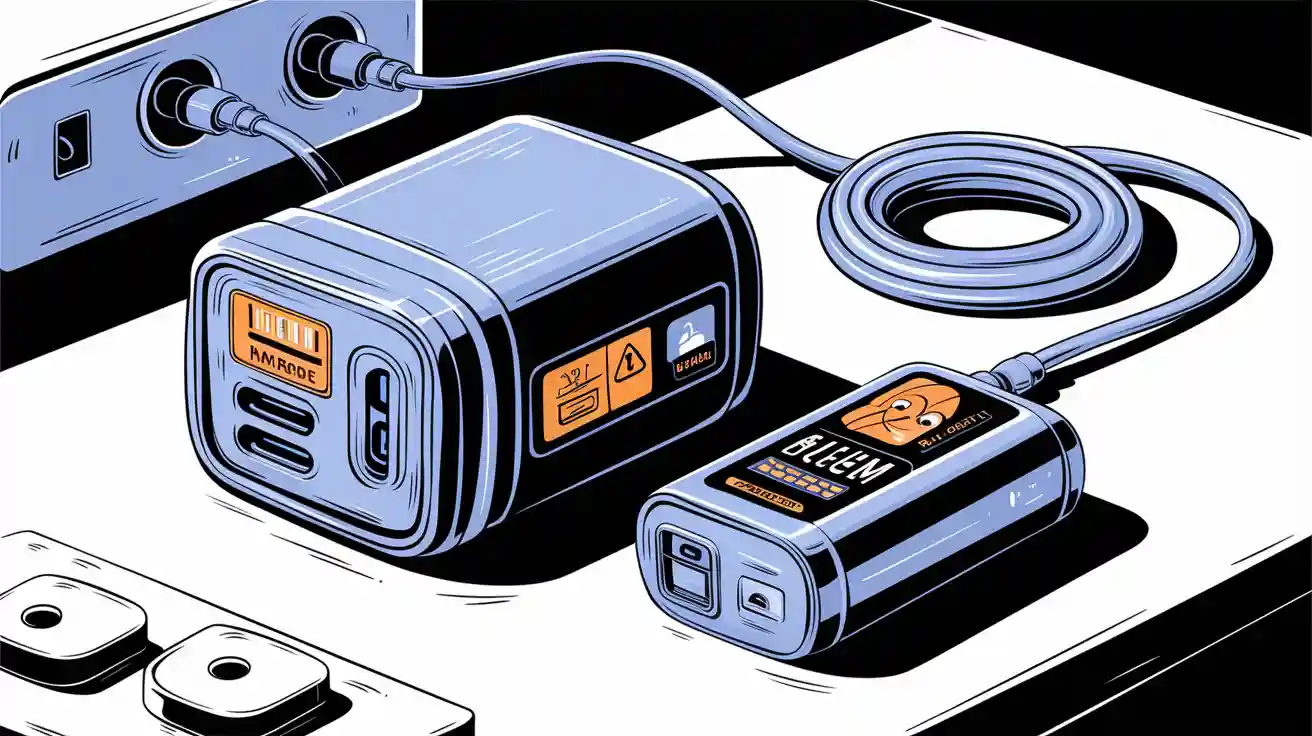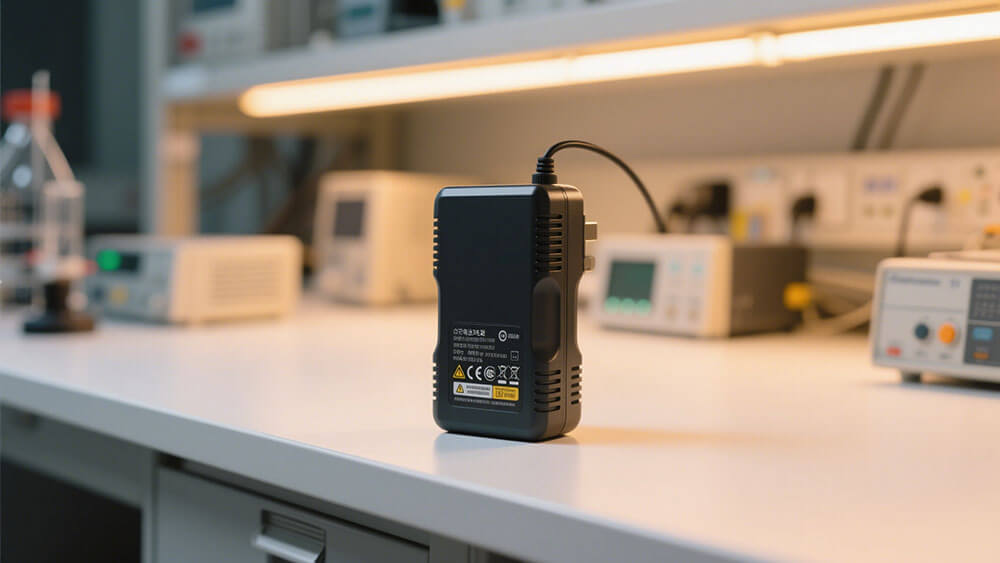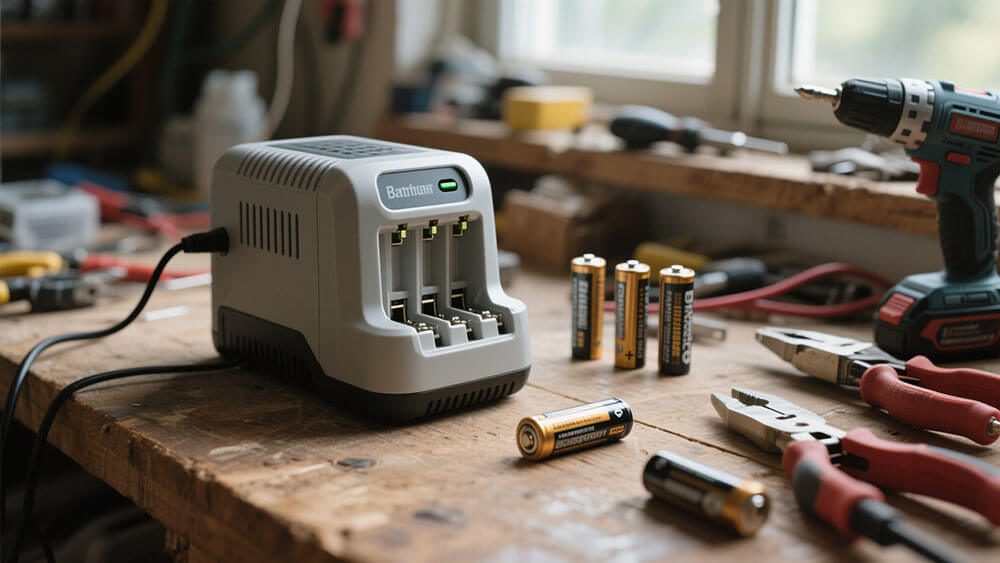Contents

Lithium battery chargers have revolutionized modern technology by ensuring optimal charging for lithium battery systems. They play a vital role in extending battery life, which is critical for devices requiring long-term reliability. The market for these chargers reflects their growing demand: valued at USD 4.76 billion in 2024, it is projected to reach USD 12.58 billion by 2033, growing at a CAGR of 11.67%.
Key Takeaways
Lithium battery chargers help batteries last longer with safety features. These include overcharge and overvoltage protection to stop overheating or harm.
Pick a charger that works with different lithium types. This ensures it fits your devices and works well.
Get chargers with smart charging systems for better energy use. This saves money and makes batteries last longer.
Part 1: Safety Features in a Lithium Battery Charger

1.1 Overcharge and Overvoltage Protection
Overcharge and overvoltage protection are critical safety features in any lithium battery charger. These mechanisms prevent the battery from exceeding its maximum voltage threshold, which could lead to overheating, swelling, or even catastrophic failure. When charging lithium-ion batteries, maintaining precise voltage control is essential to avoid damage and ensure long-term performance.
Modern chargers employ advanced circuitry to monitor and regulate the charging current and voltage. For instance, the overcharge test, governed by standards like UL 2054, ensures that batteries remain safe even when charged beyond their normal limits. This test verifies that the battery does not explode or catch fire, safeguarding both the user and the device. Additionally, finite element modeling and cycling tests have demonstrated the effectiveness of these protection mechanisms in mitigating capacity degradation and preventing thermal runaway.
Certifications such as UL 1310 and CE Marking further validate the reliability of overcharge and overvoltage protection. These certifications ensure compliance with stringent safety standards, offering you peace of mind when using lithium battery chargers.
1.2 Temperature Monitoring and Thermal Management
Temperature monitoring plays a pivotal role in the safe operation of lithium battery chargers. Lithium-ion batteries are highly sensitive to temperature fluctuations, which can significantly impact their performance and lifespan. A well-designed charger incorporates thermal sensors to continuously monitor the battery’s temperature during charging.
If the temperature exceeds safe limits, the charger automatically adjusts the charge rate or halts the charging process to prevent overheating. This feature not only protects the battery but also enhances its overall efficiency. Studies have highlighted the importance of temperature management in preventing over-voltage conditions, which can lead to battery gassing and overheating. By maintaining optimal thermal conditions, chargers ensure the safe and efficient charging of lithium-ion batteries.
Certifications like RoHS Compliance and Energy Star Rating further emphasize the importance of environmentally safe and energy-efficient charging solutions. These certifications guarantee that the charger operates within safe thermal parameters while minimizing energy consumption.
1.3 Short Circuit and Reverse Polarity Protection
Short circuit and reverse polarity protection are indispensable safety features in lithium battery chargers. A short circuit occurs when the positive and negative terminals of a battery come into direct contact, leading to a sudden surge in current. Reverse polarity, on the other hand, happens when the battery is connected incorrectly, potentially causing irreversible damage.
To address these risks, lithium battery chargers are equipped with advanced protection mechanisms. These systems detect abnormal conditions and immediately cut off the charging current to prevent damage. For example, FCC Certification ensures that chargers do not interfere with other electronic devices, maintaining a stable and safe charging environment.
In addition to protecting the battery, these features safeguard the connected devices and the charger itself. By incorporating robust safety measures, lithium battery chargers provide a reliable solution for charging lithium-ion batteries in various applications, from consumer electronics to industrial systems.
Part 2: Compatibility with Lithium Battery Packs

2.1 Support for Various Lithium Chemistries
A high-quality lithium battery charger must support a wide range of lithium chemistries to meet diverse application needs. Lithium-ion batteries, for instance, are commonly used in consumer electronics, medical devices, and industrial systems due to their high energy density and long cycle life. Chargers designed for these batteries must precisely match their platform voltage, typically 3.6V to 3.7V, to ensure safe and efficient charging. Learn more about lithium-ion batteries here.
For LiFePO4 batteries, which are favored in robotics and infrastructure applications for their stability and extended cycle life (2000–5000 cycles), the charger must accommodate their unique platform voltage of 3.2V. Similarly, NMC batteries, known for their high energy density (160–270 Wh/kg), require chargers that can handle their specific voltage and charging protocols. By supporting multiple chemistries, a charger ensures compatibility across various industries, reducing the need for multiple charging solutions.
Tip: When selecting a lithium battery charger, verify its compatibility with the specific chemistry of your battery pack to maximize performance and safety.
2.2 Adaptability to Multi-Cell Configurations
Modern lithium battery packs often consist of multiple cells arranged in series or parallel configurations to achieve the desired voltage and capacity. A reliable charger must adapt to these multi-cell setups, ensuring balanced charging across all cells. For example, in a 4S LiFePO4 pack (four cells in series), the charger must deliver a total voltage of 12.8V while maintaining uniform charging for each cell.
Advanced chargers incorporate features like cell balancing to prevent overcharging or undercharging individual cells. This is particularly critical in applications like security systems, where consistent performance and reliability are paramount. Explore more about security system batteries here.
Adaptability to multi-cell configurations also enhances the charger’s versatility, making it suitable for a wide range of applications, from electric vehicles to industrial machinery. This flexibility reduces downtime and ensures optimal charging capacity for your battery systems.
2.3 Voltage and Current Adjustability for Custom Applications
Voltage compatibility is a key feature of any lithium battery charger, especially for custom applications requiring precise control over charging parameters. Adjustable voltage and current settings allow you to tailor the charging process to your specific battery pack, ensuring optimal performance and longevity. For instance, when charging lithium iron phosphate batteries, you can set the voltage to 3.2V per cell and adjust the current to match the pack’s capacity.
This level of customization is invaluable in industries like robotics, where battery requirements vary significantly depending on the application. Learn more about robotics battery solutions here. Additionally, adjustable chargers support a wide range of charging protocols, enabling compatibility with emerging technologies like solid-state batteries. These batteries, with energy densities of 300–500 Wh/kg, represent the future of energy storage. Discover more about solid-state batteries here.
Note: Investing in a charger with adjustable voltage and current settings not only enhances compatibility but also future-proofs your charging infrastructure.
Part 3: Efficiency and Advanced Charging Algorithms

3.1 High Charging Efficiency for Energy Savings
High charging efficiency is a hallmark of advanced lithium battery chargers. These chargers convert a significant portion of input energy into usable energy, reducing energy waste and operational costs. Lithium-ion batteries, for example, achieve an impressive charging efficiency of approximately 95%, outperforming TPPL batteries, which operate at around 85%. This efficiency not only minimizes energy loss but also ensures lower energy expenses over the battery’s lifespan.
Moreover, lithium-ion batteries can accept charge rates up to 1C, enabling a full charge in about an hour. This rapid charge time makes them ideal for applications requiring quick turnaround, such as medical devices and robotics. By investing in a high-efficiency charger, you can optimize energy usage and enhance the overall charging performance of your lithium battery systems. Learn more about lithium-ion batteries here.
3.2 Smart Charging Algorithms for Optimized Performance
Smart charging algorithms revolutionize how lithium battery chargers manage energy. These algorithms dynamically adjust the charge rate, temperature, and state of charge to maximize battery performance. Industry leaders like Tesla and ChargePoint employ adaptive algorithms to optimize charging based on grid conditions, energy prices, and user preferences. Volkswagen’s research further highlights the role of intelligent charging strategies in extending battery lifespan.
Title | Summary |
|---|---|
A review of various fast charging power and thermal protocols for electric vehicles represented by lithium-ion battery systems | Proposes a wireless charging system using constant voltage (CV) and constant current (CC) control modes to enhance battery protection and system efficiency. |
Optimizing wireless charging for electric vehicles via a novel coil design and artificial intelligence techniques | Discusses the CC–CV charge control strategy for fast charging lithium-ion batteries, highlighting its effectiveness in preventing battery damage due to high voltage. |
By integrating these advanced algorithms, lithium battery chargers ensure precise control over charging parameters, reducing the risk of overcharging and overheating. This innovation is particularly valuable for infrastructure applications, where reliability and efficiency are paramount. Explore more about infrastructure applications here.
3.3 Durable Design for Industrial and Commercial Use
Durability is a critical factor for lithium battery chargers used in industrial and commercial environments. These chargers must withstand harsh conditions while maintaining consistent performance. Advanced designs incorporate robust materials and thermal management systems to ensure long-term reliability. For instance, switching chargers offer higher efficiency and faster charge times, making them suitable for high-power applications like industrial equipment and electric vehicles.
Charger Type | Benefits | Applications |
|---|---|---|
Switching Chargers | Higher efficiency, faster charging times, suitable for high-power needs | Electric vehicles, laptops, industrial equipment |
Pulse Chargers | Optimizes battery performance, reduces charging time, maintains battery health | Automotive, industrial equipment, energy storage systems |
By choosing a durable lithium battery charger, you can reduce downtime and maintenance costs, ensuring uninterrupted operations in demanding environments. For custom solutions tailored to your industrial needs, consider consulting with Large Power.
Lithium battery chargers offer essential features that enhance battery life and operational reliability. Their advanced safety mechanisms, compatibility with diverse chemistries, and smart charging algorithms ensure optimal performance across various applications.
Market Insights:
Enhanced operational efficiency
Rising demand for energy-efficient solutions
Transition from fuel to electric forklifts
Investing in the right charger reduces downtime and long-term costs. For tailored solutions, consult Large Power.
FAQ
1. How do I choose the right lithium battery charger for my device?
Select a charger compatible with your battery’s chemistry, voltage, and capacity. Ensure it includes safety features like overcharge protection and temperature monitoring.
Tip: Check your battery’s specifications before purchasing a charger.
2. Can I use one charger for multiple lithium battery types?
Yes, if the charger supports adjustable voltage and current settings. Ensure it accommodates the specific chemistry and configuration of each battery type.
⚠️ Note: Using an incompatible charger may damage your battery or device.
3. Why is cell balancing important in multi-cell battery packs?
Cell balancing ensures uniform charging across all cells, preventing overcharging or undercharging. This process extends battery life and improves overall performance.
Pro Insight: Look for chargers with built-in cell balancing for multi-cell setups.





